|
|
 |
|
February 22, 2012
For better or worse, Italy sends a gazillion bottles of Pinot Grigio to be quaffed by Americans 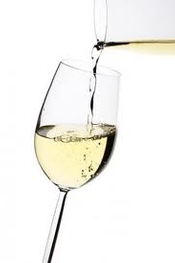 each year, with the great majority of quaffing taking place in the warm months of the year. By mid-winter of the second calendar year after the wines were made (e.g., right now for Grigios made in 2010), the wines are almost all growing tired and need to be relieved by replacement from the intervening year. And sure enough, wines from 2011 will appear here shortly. However, if you want to know which 2011s to buy, a very good test is to see which 2010s are still fresh and flavorful at this juncture. each year, with the great majority of quaffing taking place in the warm months of the year. By mid-winter of the second calendar year after the wines were made (e.g., right now for Grigios made in 2010), the wines are almost all growing tired and need to be relieved by replacement from the intervening year. And sure enough, wines from 2011 will appear here shortly. However, if you want to know which 2011s to buy, a very good test is to see which 2010s are still fresh and flavorful at this juncture.
This is a task that I’m engaged in every January and February along with fellow WRO contributor Paul Lukacs, as we work as consultants for the highly successful Clyde’s 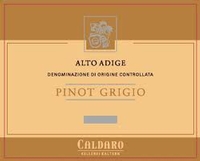 Restaurant Group based in Washington, D.C. This year we tasted more than 1,900 wines in search of 55 winners to place on wine lists for Clyde’s, and this undertaking (which sometimes seems like it might end up involving an undertaker) is probably the most illuminating wine activity that either of us engages in all year. Restaurant Group based in Washington, D.C. This year we tasted more than 1,900 wines in search of 55 winners to place on wine lists for Clyde’s, and this undertaking (which sometimes seems like it might end up involving an undertaker) is probably the most illuminating wine activity that either of us engages in all year.
We learn a lot about what categories seem to be on the rise (Moscato this year, though most of it is unspeakably awful) and what’s surprisingly scarce (whites from Spain, though there’s no way to know whether they’re losing favor with importers and distributors or doing so well that stocks are too low to supply a sales juggernaut like The Clyde’s Group).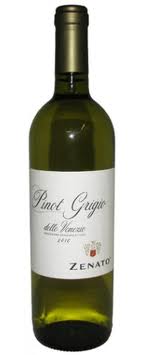
These commercial indicators are interesting enough, but what is most revealing in the midst of all the sloshing and spitting involved in the Clyde’s Core Trials is seeing which producers pull away from the pack when their wines are bench-tested against all of the other contenders in a peer-group tasting. A category like Pinot Grigio is a perfect example since the wines are all nearing the end of their vintage release cycle, and the wines that are still on their stride--even as the rest of the pack is faltering--really shine as admirable exception. So here’s my tip for the day: If you’re in any city other then Washington, D.C. and have a taste for Pinot Grigio, head out to find yourself a couple of bottles of Zenato, Delle Venezie Pinot Grigio 2010 ($13, imported by Winebow) or Kellerei Kaltern, Alto Adige Italy 2010 ($13, imported by Siema). At this price level, for the next couple of months, these may well offer the only game in town….
Posted by Michael Franz at 8:06 AM
|
|
February 17, 2012
The words we use to describe wine are often ephemeral, with many of the adjectives we call on to express the characteristics of a given wine vague and/or abstract. Take the word “elegant” for example.
The best dictionary definition that I’ve come up with so far describes elegance as “restrained beauty of style.” In mathematics, an elegant proof is one that is both simple and effective. All of this suggests that something elegant is characterized by complexity without flamboyance. Certain kinds of wine inevitably lend themselves to being described as “elegant” more than others, Champagne being the most notable example. Other white wines--great Burgundies, the best Rieslings—are undoubtedly elegant. Fabulous Pinot Noir can be elegant, Zinfandel not so much (while elegant examples certainly exist, elegance is not an attribute one really looks for in Zin).
Of course the perception of elegance in fashion, or people, or wine, is somewhat subjective; one man’s “elegance” may be another person’s meh. Wine lovers will never agree 100% on which wines are truly elegant, but most of us feel that we know it when we see it (or more accurately, taste it). Certainly we who write about wine believe that the word conveys meaning, as a random glance at past Wine Review Online reviews indicates. Not surprisingly top Champagnes are most frequently singled out but we are not immune to identifying elegance in Malbec, Shiraz and other less obvious candidates. “It is the epitome of elegance and finesse…” wrote Robert Whitley describing Gosset Champagne. “…fresh, elegant and light on the palate,” said Ed McCarthy about Ayala Brut Nature Champagne. But when Michael Apstein tasted Michel Torino’s “Don David” Malbec he noted: “It’s more elegant than most Malbec.” Paul Lukacs described The Yard Shiraz as “Graceful, even elegant…” and Michael Franz said that Leeuwin Estate Shiraz has “Elegant notes of dark berries and black cherries.” Gerald Boyd wrote that “the finish is long and elegant,” when he reviewed Clarendon Hills Syrah,” and I found Alamos Chardonnay to be “Elegant and satisfyingly complex”.
Of course there are plenty of other equally maddening abstract terms used to describe wine. Finesse. Balance. Suppleness. These are among the acceptable, much-used descriptors that every wine connoisseur understands, or at least sort-of-understands, but they aren’t concrete, measurable entities such as tannins, acidity, sweetness. They reflect the attempt to describe the less tangible characteristics of fine wine. Perhaps we are reaching for that mysterious component which the poet Charles Baudelaire called “the soul of wine.”
Posted by Marguerite Thomas at 6:18 PM
|
|
February 8, 2012
Are you having friends over to watch the Academy Awards© on February 26? If so you might consider including Oscar-themed wines in the festivities. With that in mind I offer here a few random ideas of wines to incorporate into a vinous Oscar/Bacchus evening. As is true in filmdom, these nominees range widely in style.
Let’s begin with the Posthumous Award, a notable category at the Awards Ceremonies honoring a distinguished deceased actor. Past silver screen recipients of the award have 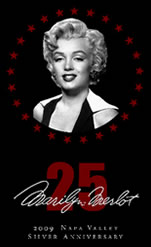 included Spencer Tracy, Walt Disney and James Dean. The obvious winner in the wine division this year would be MARILYN MERLOT, in honor of this year’s film nominee “My Week With Marilyn.” It also deserves recognition for longevity. This wine is celebrating its 25th anniversary (can you believe it?) while Marilyn Monroe’s own career spanned only 14 years, beginning in 1947 and ending with her role in The Misfits in 1961. The wine is nicely rounded, youthful and friendly--just the sort of wine you’d like to spend the evening with, or at least take to dinner (Marilyn Merlot “25,” Napa Valley, California, $29.) included Spencer Tracy, Walt Disney and James Dean. The obvious winner in the wine division this year would be MARILYN MERLOT, in honor of this year’s film nominee “My Week With Marilyn.” It also deserves recognition for longevity. This wine is celebrating its 25th anniversary (can you believe it?) while Marilyn Monroe’s own career spanned only 14 years, beginning in 1947 and ending with her role in The Misfits in 1961. The wine is nicely rounded, youthful and friendly--just the sort of wine you’d like to spend the evening with, or at least take to dinner (Marilyn Merlot “25,” Napa Valley, California, $29.)
Best Director: FRANCIS FORD COPPOLA “DIRECTOR’S,” PINOT NOIR a lithe, fragrant, nicely produced Pinot with highlights of cherry and strawberry flavor. The happy ending includes a gloss of soft tannins (Francis Ford Coppola, “Director’s” Pinot Noir, Sonoma Coast, California, $21.)
Best Costume: LADY OF SPAIN, whose bottle is sheathed head to toe in a sleek yellow wrapper emblazoned with a colorful caricature of--well, a lady of Spain. Crisp and sparkling, this is budget bubbly at its best. (Paul Cheneau Lady of Spain, Cava Brut Méthode Traditionnelle, Pasternak Wine Imports, $13.)
Best “Adult” Film: (Wait--is there such a category?) NAKED EARTH ROUGE gets the Oscar/Bacchus for its string of sexily silhouetted women dancing around the capsule, and for its well-endowed body, penetrating fruity flavors and provocative hints of spice. Rouge is a blend of Merlot, Cabernet Sauvignon, Grenache and Carignan, and its seductive French accent comes from its origins in the Languedoc-Rousillon. (Naked Earth, Certified Organic Vin de Pays d’Oc, France, Imported by Canon Wines, $12.)
Best Animal on a Wine Label: Always a contender for this award, multitalented GOATS DO 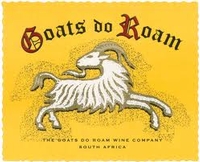 ROAM wins for its cleverness, humor, and pleasing design, as well as for the wine’s fresh, earthy blend of Syrah, Cinsault, Mourvèdre, and Grenache (Goats Do Roam Red, Western Cape, South Africa, $10, Vineyard Brands.) ROAM wins for its cleverness, humor, and pleasing design, as well as for the wine’s fresh, earthy blend of Syrah, Cinsault, Mourvèdre, and Grenache (Goats Do Roam Red, Western Cape, South Africa, $10, Vineyard Brands.)
Best Foreign Language Wine: DOMAINE SIGALAS, a steely, mineral-laden white wine made from two indigenous Greek grapes named Assyrtiko and Athiri. A recent review at Wine Review Online described it as “not at all unlike a youthful Chablis.” (Domaine Sigalas, Santorini, Greece, Assyrtiko/Athiri 2009, Diamond Importers, $19.)
Best Supporting Actor: China, for its role in helping to support the Bordeaux wine industry. Recent purchases of Bordeaux chateaux by Chinese investors include CHATEAU LATOUR LAGUENS (Entre-Deux-Mers), CHATEAU CHENU LAFITE (Côtes de Bourg), CHATEAU VIAUD (Lalanded-de-Pomerol), CHATEAU LAULAN DUCOS (Médoc), and CHATEAU BRANDA (Fronsac). Most appropriately from the point of view of the Bacchus/Oscar Awards CHATEAU MONLOT (St. Etienne) was recently purchased by Zhao Wei, a Chinese film star.
Posted by Marguerite Thomas at 8:55 AM
|
|
February 4, 2012
My inbox is overflowing these days with wine suggestions for Valentine's Day — everything from Argentinian Malbec to moscato from Piedmont to sparkling shiraz from Australia. If it's red or sweet or has bubbles, it must have been crafted expressly for this one day of the year when romance is in the air. No?
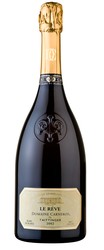 Actually, I have fairly simple tastes for Valentine's Day. Simple as in straightforward, and perhaps a bit old-fashioned. I like fizz for me and my valentine. Good fizz. Actually, I have fairly simple tastes for Valentine's Day. Simple as in straightforward, and perhaps a bit old-fashioned. I like fizz for me and my valentine. Good fizz.
Now, there are two types of good fizz in my humble opinion. There is Champagne, or its new world equivalent. And there is the kinda sweet, kinda frothy fizz that the Italians have perfected in the Piedmont region of northern Italy.
Champagne we all know, or wish we knew. It is so delicious, so sophisticated, so elegant that after every sip we vow to drink more of the stuff in the future. Yet it seems to come out only for weddings, New Year's Eve and, of course, Valentine's Day.
It's so expensive, you say? That may be, but the new world equivalents are purchased and consumed for exactly the same reasons even though they are often half the price and sometimes just as good.
So now that you know the path to my heart is paved with fine bubbles, you only need the names of a few favorite Champagnes to make my V Day: I will not turn up my nose at anything from Pol Roger, to my palate the personification of elegance in Champagne; either the Charles Heidsieck Brut Reserve or Blanc des Millenaires would likely inspire multiple cartwheels; and if you are feeling flush, I can always muscle through a bottle of Gosset, Taittinger or Dom (any Dom, Perignon or Ruinart, will do).
The best of our domestic bubblies also have been known to stoke the passions. Domaine Carneros by Taittinger, either the prestige cuvee, Le Reve Blanc de Blancs, or the superb brut rose, Cuvee de la Pompadour, are among the finest sparkling wines made outside of France's Champagne district; Iron Horse, Gloria Ferrer and J, all from Sonoma County, can dazzle as well; and the Napa Valley's Schramsberg is the towering pioneer of sparkling wine in America.
What I won't do with any of these bubblies, however, is to buy into the big lie of every Valentine's Day I can remember: The blissful pairing of Champagne and chocolate. Sorry, it just doesn't work.
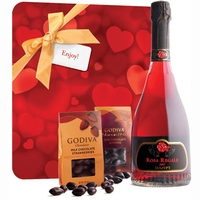 With chocolate, I turn to the other good fizz. That would be the frothy, slightly sweet, low-alcohol Brachetto d'Acqui from Italy. The luscious raspberry and strawberry flavors may well be the perfect pairing with chocolate, and these wines are sweet enough that they won't clash with a slice of chocolate cake or a truffle. With chocolate, I turn to the other good fizz. That would be the frothy, slightly sweet, low-alcohol Brachetto d'Acqui from Italy. The luscious raspberry and strawberry flavors may well be the perfect pairing with chocolate, and these wines are sweet enough that they won't clash with a slice of chocolate cake or a truffle.
Rosa Regale is my brachetto of choice, and probably the easiest to find, but I must admit I've never had a bad brachetto.
Now you may still opt for a merlot or a Malbec, and you should indeed drink what you like on the big day. As for me, I am sticking with the bubbly, for it is truly the wine of woo.
Posted by Robert Whitley at 9:46 AM
|
|
 |
|